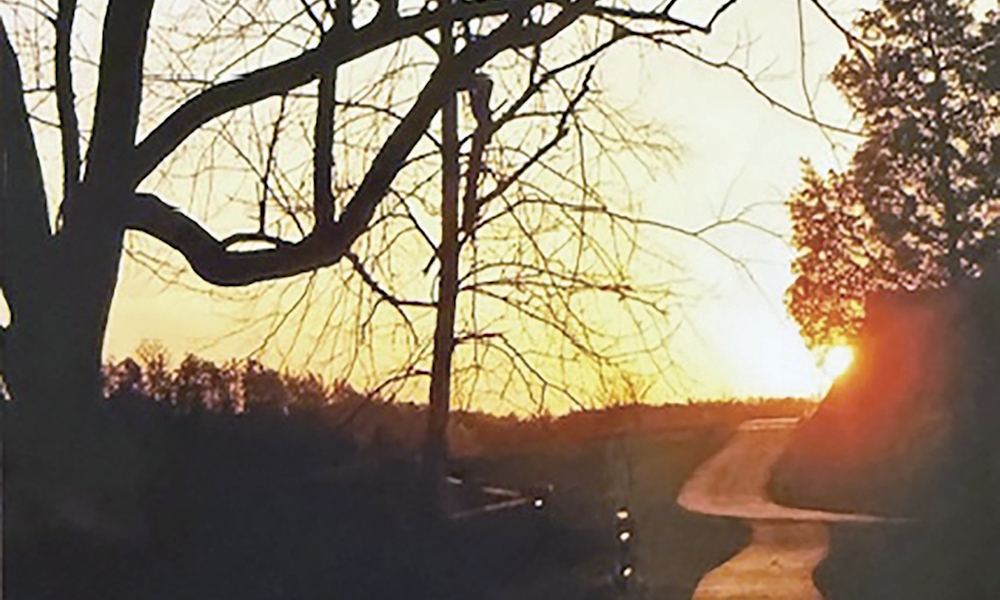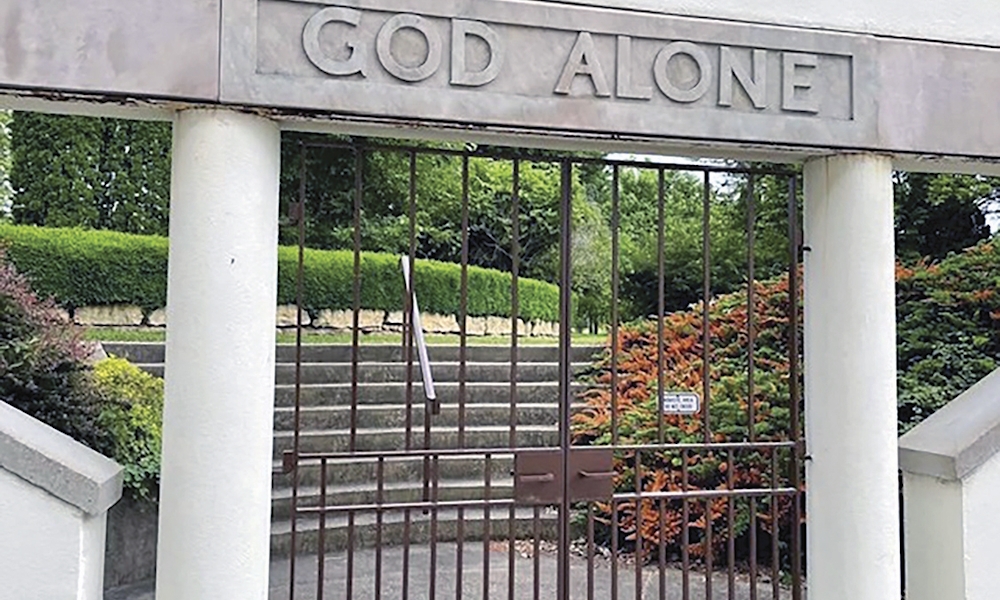
Meeting God and God alone
Building a Hermitage in My Heart
Building a Hermitage in My Heart
After converting to Catholicism in 2010, I began celebrating my new life in Christ by going on weeklong silent retreats every year after Easter at the Abbey of Gethsemani in Kentucky.
After converting to Catholicism in 2010, I began celebrating my new life in Christ by going on weeklong silent retreats every year after Easter at the Abbey of Gethsemani in Kentucky.
Job demands, eldercare duties and the general busyness of life all continued to take their toll, and I needed to learn something of silence that I believed the Trappist monks could teach me.
I first heard about the Abbey of Gethsemani as a college student when I began reading Thomas Merton, a Trappist monk who wrote eloquently about his life at the Abbey. Most captivating to me were his journals, published after his death. One in particular—Dancing in the Water of Life: Seeking Peace in the Hermitage—detailed the period when the abbot allowed him to live in a hermitage in the woods across from the Abbey. I longed for that same peace Merton discovered in the silence of his hermitage.
Trappists (Order of Cistercians of the Strict Observance, OCSO) do not take a strict vow of silence, but only speak under certain conditions when necessary. The goal is to live a life of continual prayer and practice ora et labora (“pray and work”). Between making fruitcake and fudge to support the monastery and doing mostly manual labor needed at the Abbey, the monks meet seven times a day to pray the Liturgy of the Hours—beginning with Vigils at 3:15 a.m. and ending with Compline at 7:30 p.m. The heart of all these services are the 150 psalms that the monks chant on a two-week cycle. At each hour there also is a hymn, Scripture reading, prayer of the day and commemoration of Our Lady.
I always felt relief after arriving at the Abbey. There was no connection to the outside world, and my cell phone no longer worked unless I walked a distance from the Abbey. The clock finally stopped, and I was on God’s time.
While on retreat, I always sought spiritual direction from the abbot or one of the monks. I walked around the Abbey grounds, ate meals in silence, read books from their library, learned how to pray the Rosary from one of the brothers and went to the regular spiritual “Chapter Talks” that monks and the abbot gave to retreatants.
My silent weeks always went too fast and I never wanted to leave the Abbey. Then one year, one of the monks shared something I’ve never forgotten: “Build a hermitage in your heart where you can meet God and God alone.”
His message seemed to resonate with the one on a cast-iron gate next to the steps leading up to the Abbey church. Written in stone above the gate are the words: “GOD ALONE.”
I appreciated the monk’s words then, but they really speak to me now. Thanks to the monks I observed, talked to and corresponded with over the years, I eventually came to understand that going on retreat doesn’t necessarily mean I have to leave home. It just means that I need to make time and space in my daily and weekly schedule where I meet God and God alone.
Here are some things that have helped me build that hermitage in my heart:
1) Give God time at the beginning of each day.
On ideal mornings, I begin the day by lighting a candle and praying the Rosary. For a few minutes afterward, I sit in silence and let the Holy Spirit speak to my heart. Then I read the daily Mass readings from the Laudate app or from Give Us This Day, a monthly Liturgical Press publication designed to help Catholics pray the Liturgy of the Hours. I practice lectio divina, an ancient way of praying with the Word. I don’t always have time for everything, but the most important thing is that I give God the first part of my day. After praying individually, my husband and I also pray and meditate on the Word together. It has proven to be a solid foundation for each day and for our marriage. While my goal is to dedicate an hour or more of my morning to prayer, the time I do spend is well worth it.
2) Take time to stop and pray.
Taking time to read Scripture and pray throughout the day helps keep my head and heart in the right place. I pray and meditate on the Word while doing freelance work for mostly Catholic publications and organizations. Still, there are deadlines, everyday stressors and the temptation to look at my newsfeed. But taking time—even just five minutes—to completely stop what I’m doing and meditate on Scripture saves me time and time again.
3) Keep the Sabbath holy.
No matter how many deadlines I have, I do not work on Sunday. There is Mass, rest and our family day. I dedicate this day for God and God alone. Except for contacting relatives, I usually fast from cell phone use, the news cycle and the outside world. The only reading I do is out of or based on the Word. This year for Lent, I read Robert Cardinal Sarah’s The Power of Silence: Against the Dictatorship of Noise. I’ve underlined many passages, but one quote in particular convinced me to buy the book: “Without silence, God disappears in the noise. And this noise becomes all the more obsessive because God is absent. Unless the world rediscovers silence, it is lost. The earth then rushes into nothingness.”
4) Create a sacred space in your home.
When I pray the Rosary in the morning, I always return to the same place where I light a candle, pray the mysteries and sit in silence for a few minutes afterward. My husband and I also have a dedicated space where we go together to pray and meditate on the Word. Having this sacred space has helped us in so many ways. We have adorned this space with some of our favorite family photos, candles, pictures of Jesus, Mother Mary, the Last Supper, plaques and crosses my husband made with our favorite Bible verses painted on them, a Bible and other religious books, a third-class Padre Pio relic and a small holy water font. Having these items in our sacred space enhances our prayer and meditation time.
5) Join monks for Mass.
I have a favorite video of winter Compline from the Abbey of Gethsemani that I’ve watched for years. Some of the monks have passed on since it was recorded, but as we are all part of the Communion of Saints, I feel connected with them every time I watch it. The Abbey of Gethsemani does not livestream Mass or services marking the Liturgy of the Hours, but other religious communities do. Sometimes I join one of the communities on livestream for Mass or for the Liturgy of the Hours.
6) Watch spiritual movies.
My favorite movie—and one of the few I own—is nearly three hours long and has almost no dialogue. Into Great Silence is a 2005 documentary that intimately details the lives of Carthusian monks of the Grande Chartreuse in the French Alps. I first became fascinated with the Carthusians because Thomas Merton had considered leaving the Trappists and joining the order, which is considered the strictest in the Catholic Church. Each time I watch the film, I too, enter into a great silence.
7) Listen to Gregorian chants.
I prefer silence to most music, but Gregorian chant is an exception. Traditionally sung in Latin, Gregorian chant dates to the early church in the 9th and 10th centuries. And while the Church no longer requires it as part of the liturgy, it still considers Gregorian chant to be the most suitable for worship. For me, it always leads me to sacred silence—it is the perfect marriage of music, prose, prayer and meditation.
8) Spend time meditating on or creating sacred art.
At the Abbey of Gethsemani, there are a number of icons hanging from the walls that were painted by one of the brothers. I purchased a replica of one of these while on retreat one year, and it now hangs in our home. The icon features a picture of Christ holding a scroll with words based on Matthew 11:28: “I am the Living Bread. Come to me you who labor and are burdened and I will refresh you.” Meditating on the Scripture passage and resting my eyes on the familiar icon from the Abbey helps me.
I hope some of these suggestions help you build a hermitage in your heart, too. And as this “Pilgrims of Hope” jubilee year concludes, if you are unable to make a pilgrimage to Rome or the Holy Land, know that God is always waiting for you in your heart—he just needs your time and your “yes.”


